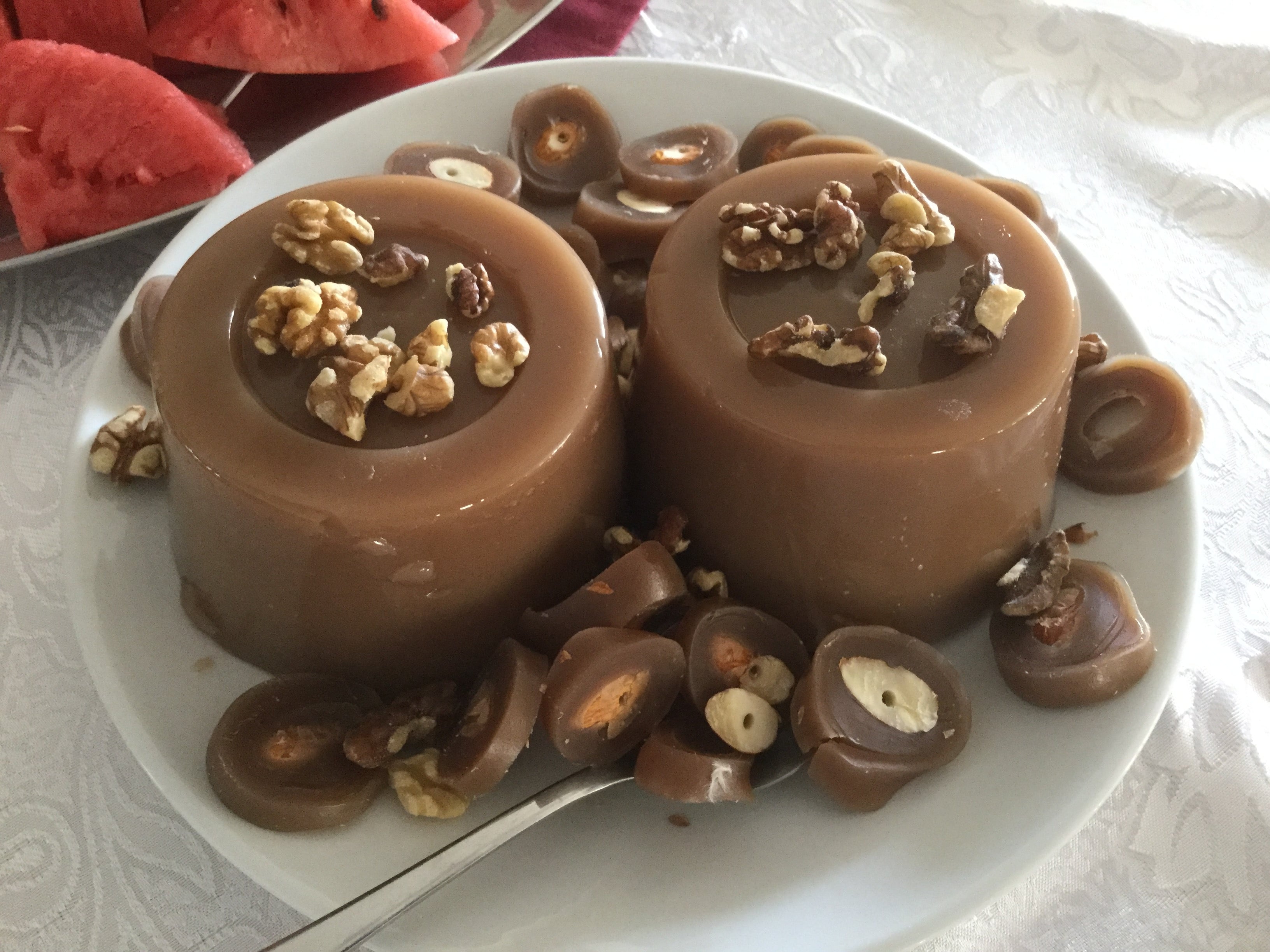Mustalevria, an autumn dessert echoing wine aromas
Mustalevria, a grape jelly, is a healthy, fragrant and traditional seasonal sweet. It is associated with the coming of autumn and its main ingredients are must and flour, as the word itself indicates. Mustard is the grape juice produced before the fermentation process.
Mustalevira appears after the end of the summer holidays, when must is produced. One can find it clay or plastic cups in dairy stores, bakeries and pastry shops, and the secret to its success is the good proportion of must and flour.
It has a crystal surface, its texture is creamy, and it has a cool taste. The cream produced from grape juice has been sweetening for thousands of years now. Aristophanes refers to Pluto as an “ointment”. But “Oinuta” was also called in Byzantium, but also “pastel” or “must pie”.
Athenaeus records petimezi, making it apparent that in the ancient world this form of viscous must – as it appears after boiling was widely used. The same author speaks of the “Cretan glycine”, a kind of bread made with sweet must and olive oil. Apicius often refers to the preparation of sauces with the addition of raisins and boiled grape juice.
The name varies according from region to region. In Samos, for example, it is also referred to as kourkouta, in Crete it is called kefteria, while in Cyprus it is called palouzes. The nutritional value of must flour is very high due to its high content of minerals and vitamins. Specifically, the must is rich in Vitamin A, Vitamin C, and B complex vitamins, while minerals contain calcium, phosphorus, potassium and iron. It is a good source of natural sugars, therefore consuming it gives the body immediate energy.
Mustalevria is served with a layer of sesame seeds and a pinch of cinnamon.
